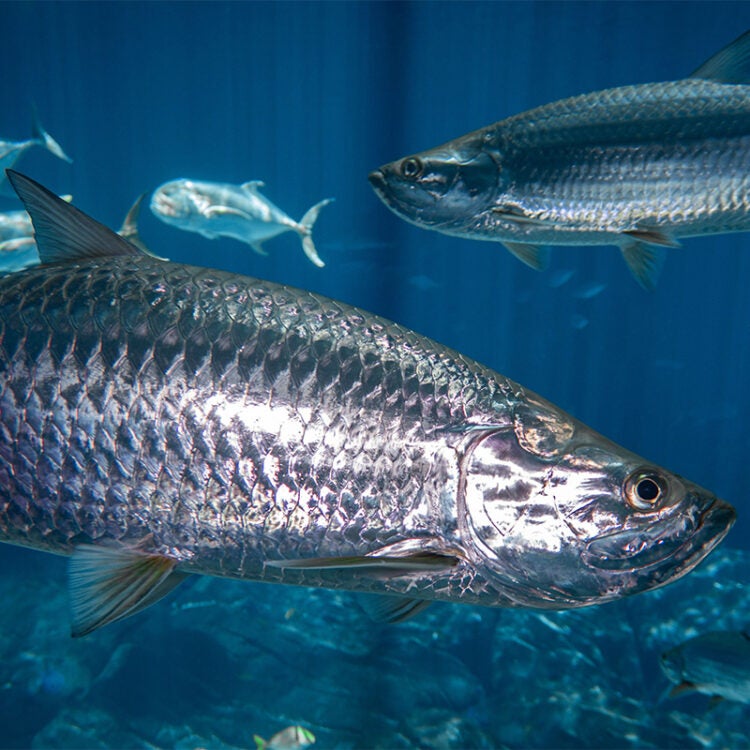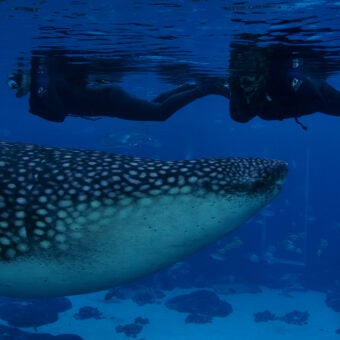-
Size
Up to 8 feet (2.5 m) -
Diet
Fish and larger invertebrates, such as shrimp and crabs -
Range
Atlantic Ocean -
Habitat
Coastal waters, bays, estuaries and mangrove-lined lagoons and rivers
Physical Characteristics
- Maximum length of more than 8 feet (2.5 m). Maximum weight of 355 lbs. (161 kg).
- Elongated, laterally compressed body, with a large upturned mouth. Body covered with large scales.
- The coloration is blue-grey on the back and bright silver on the sides and belly.
Animal Fun Fact
The tarpon has an air bladder that helps it live in oxygen-poor water.
Diet / Feeding
- Diet consists of fish and larger invertebrates, such as shrimp and crabs. Feeds mostly on mid-water prey including mullet, pinfish, needlefish, sardines and anchovies.
- Larval and small juvenile stages consume zooplankton, insects and small fish.
Range / Habitat
- Occurs in the warm waters of the Atlantic, throughout the Gulf of Mexico and the Caribbean and near the terminus of the Panama Canal.
- Found in coastal waters, bays, estuaries and mangrove-lined lagoons and rivers at depths down to 98 feet (30 m). Often enters river mouths and bays and travels upstream into fresh water.
Reproduction & Growth
- It is believed that an average-sized female can produce over 12 million eggs. Spawning takes place in open water.
- Eggs hatch at sea and drift as transparent, ribbon-like larvae on ocean currents, eventually ending up in estuarine waters.
- The larva resembles that of the bonefishes and eels, indicating a close evolutionary relationship.
Conservation Status
- “Vulnerable” on the IUCN Red List.
Additional Information
- Feeds both during the day and at night.
- Can tolerate a variety of environments and often travels upstream into fresh water. Can survive in oxygen-poor environments due to its modified air bladder, which is connected to the esophagus and can be filled directly with air. Large individuals can often be seen rolling at the surface of the water as they gulp air.
- Swims in schools during the day; the same large groups can be found in the same area for years.
- Highly regarded as a sport fish, because of its strength, stamina and fighting ability; makes impressive leaps when hooked.
- One of Florida’s premier game fish, but cannot be fished commercially. Most recreational anglers practice catch-and-release. A special tag must be purchased from the state to keep the fish as a trophy.
- Has been identified in fossil records dating back some 135 million years ago to the Upper Cretaceous Period.
Sources
- www.fishbase.org
- www.flmnh.ufl.edu
- www.marinefisheries.org
- www.sms.si.edu
- Encyclopedia of Fishes, 2nd Edition, 1998, pg. 85
- Mcclane’s Field Guide to Saltwater Fishes of North America. McClane, A.J., pgs. 59-60
- Photo Credit: Kelly Hood





